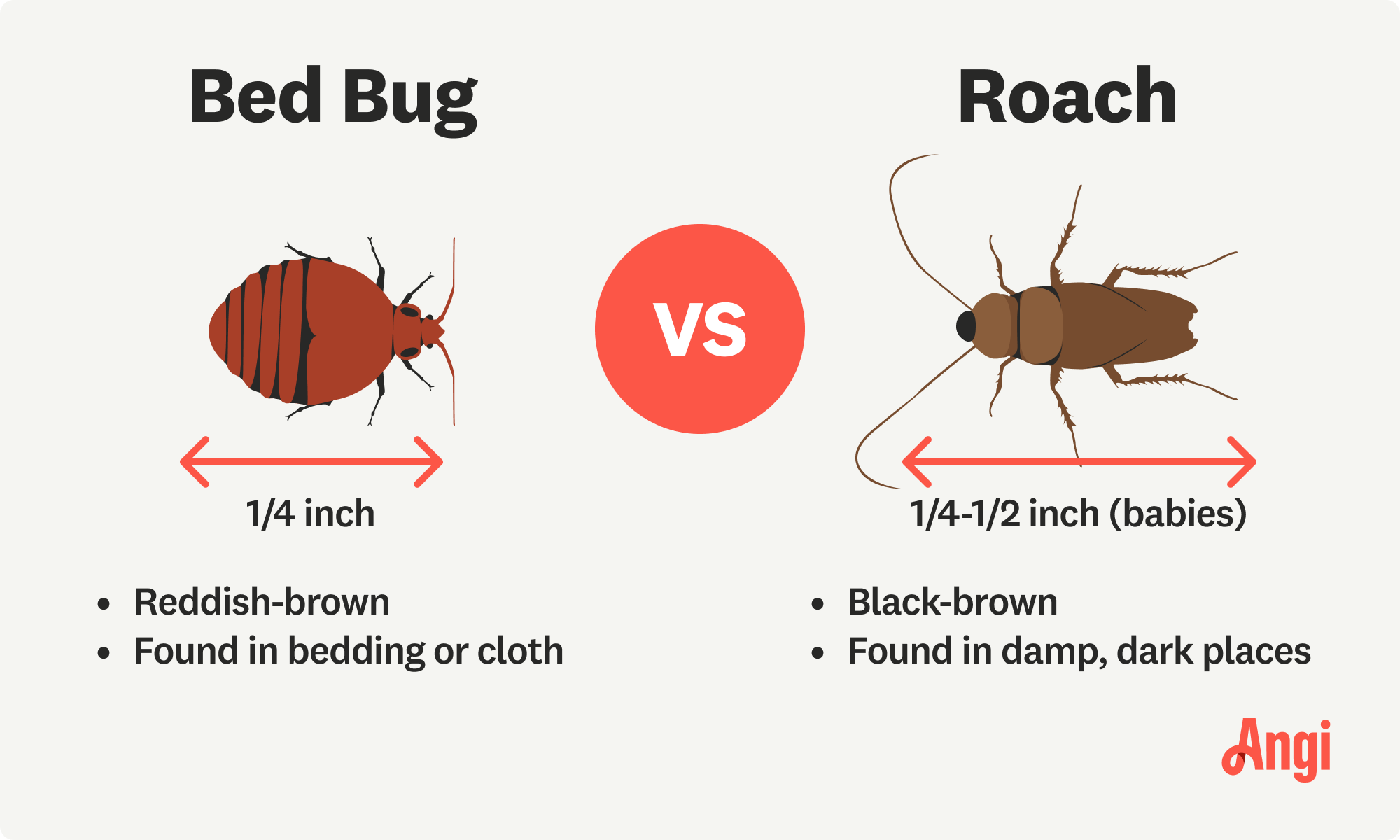
If you have a serious rodent problem, you may need to know the cost of hiring a rat exterminator. We can help you estimate costs in Atlanta, GA.
Bug them out of their own sneaky spots


Bed bugs love hiding in small spaces, including behind baseboards, in electrical outlets, and on the seams of your mattress.
You may notice blood spots or feces before you spot the bugs themselves.
Bed bug bites are itchy and usually appear in clusters or zigzags.
Bed bugs can hide on your body, especially in your hair, folds of your ears, and around your groin area.
Professional pest control is the best way to eradicate bed bugs, although early detection limits the infestation and allows for successful DIY treatment.
Bed bugs are notoriously sneaky and find tiny spaces to hide in, from your headboard to an electrical outlet. Finding these pests sooner rather than later minimizes the risk of a major infestation. Here’s how to find where bed bugs hide and what to do next.
Bed bugs are small, reddish-brown, flat insects ranging from 1 mm to 7 mm that feed on blood, often at night. The bites can cause itchiness, rashes, and allergic reactions, according to the Mayo Clinic. They don’t spread disease, but they can wreak havoc on your home and mental health. Finding bed bugs and removing them is crucial to your well-being.
Bed bugs are exceptional hiders and can sneak into spaces the width of a credit card or smaller. Here are all the main places bed bugs hide.
Look along the piping and seams of your mattress and box spring. Grab the tag and look on both sides.
Bed bugs love to nestle between your headboard and bed because it puts them close to their host (you). Take a flashlight and look around the edges and cracks.

If you have removable cushions, take them out of your couch and other furniture. Look in the crevices of the furniture and on cushion seams for spots of blood, casings, and live bugs.
Open the curtains and look at the seams and folds to see if the bed bugs are taking up residence.
Because of the warmth and tight space, bed bugs are attracted to electrical outlets and like to cozy up near light switches. Look closely with a flashlight or magnifying glass.
The warmth of your appliances draws the bed bugs in. Look on the edges, in the crevices, on the back, along the top and bottom, and around the doors and gaskets of your appliances.
Bed bugs might hide behind the pictures on your wall or behind peeling wallpaper or paint.
Look where the ceiling and the wall meet, especially in any gaps or cracks, to see if bed bugs or eggs are tucked away.

Always do a bed bug check on your luggage before bringing it into your home because bed bugs are great hitchhikers. Check to see if bed bugs are in the pockets, along the zipper lines, or inside your suitcases and bags.
Before bringing any used clothes, bed sheets, towels, or linens into your home, always send them through a heat wash or check them thoroughly for signs of bed bugs.
Secondhand furniture is a great find, but it can also be a way for bed bugs to enter your home. Look in the cushions, along the seams, and in any holes or gaps.
Bed bugs love to hide in clothing, especially during the day. If you suspect bed bugs, remove the clothes from your drawers, wash them on a high heat setting, and vacuum your drawers, especially all of the crevices.

The bed bug life cycle is egg to nymph to adult. It takes between one month and several months for a bed bug to reach the adult stage, depending on the temperature and availability of blood meals. Bed bugs thrive in temperatures between 65 degrees Fahrenheit and 85 F, but they can survive in temperatures as high as 113 F.
They often travel 5 to 20 feet to their host, although they can travel up to 100 feet to find a snack. Bed bugs need at least one blood meal to move to the next stage of life, which includes five molts as a nymph. Adult female bed bugs lay 200 to 500 eggs in their lifetime.
| Life Cycle Stage | Description | Proximity to Host |
|---|---|---|
| Eggs | Small, milky-white eggs, 1 mm long | 5–100 feet |
| Nymphs | Small versions of adult bugs, need 5 molts and blood meals to go to the next stage | 5–100 feet |
| Adults | Reddish-brown bugs 1/4-inch long, require blood to make eggs | 5–100 feet |
To determine if you have bed bugs in your home, look for these signs of bed bugs on your body:
Itchy bites
Small red or pink bumps with a darker center
Bites in clusters, lines, or zigzag patterns (often made of two to five bites)
Slightly swollen or raised bites less than 5 mm in diameter
Bed bugs can show up anywhere on your body, but they love hiding in dark, tight, folded spaces. Here are common places a bed bug hides on your body:
Scalp and hairline
Folds of the ears
Underarms and armpits
Groin area
Genital region
Behind the knees
On ankles
Between fingers and toes
In the creases of the elbow
Around the waist
Look for these common signs of bed bugs in your home:
Red or rust-colored stains on bed sheets, mattresses, and furniture
Small dark spots of bed bug excrement and blood on fabric
Bed bug eggs and eggshells equal to 1 mm
Pale yellow skins or shells of shedded nymphs
Live bugs in your mattress, sheets, and blankets
You can prompt bed bugs to come out of hiding by using heat, traps, or creating a carbon dioxide source. You can also disrupt their hiding spots by cleaning and sealing cracks.
Heat: Place a hair dryer or steamer on a low setting near cracks, crevices, and on mattresses and couches.
Light: Turn off the lights to get bed bugs to come out of hiding. Use a flashlight to spot their movement.
CO2: You can mimic the CO2 of a human host and lure bed bugs out by mixing white vinegar and baking soda.
Traps: Use DIY or bed bug traps from a local hardware store to expose bed bugs. The traps won’t kill the bugs but are great for early detection and limiting an infestation.
Cleaning: Vacuuming crevices, flooring, and fabric materials can dislodge bed bugs and force them to move.
Scraping: Use a credit card or thin tool to scrape bed bugs out of tight hiding spots.
Pest control: Pros use pesticides and heat treatments to eradicate bed bugs from their hiding places.
Getting rid of bed bugs takes a lot of effort and involves a combination of cleaning, killing bed bugs, and eradicating all stages of the life cycle.
Steam clean furniture at a temperature of at least 113 F.
Wash your sheets, blankets, comforters, clothing, curtains, and linens on high heat.
Sprinkle food-grade diatomaceous earth on mattresses, baseboards, and furniture to kill the bed bugs.
Vacuum your bed, bedframe, mattresses, flooring, and cracks and crevices in the walls to eradicate the bugs.
Contact a local pest control specialist who can properly use fumigation, house tenting, and bug bombs.
From average costs to expert advice, get all the answers you need to get your job done.

If you have a serious rodent problem, you may need to know the cost of hiring a rat exterminator. We can help you estimate costs in Atlanta, GA.

Budget for the cost of tick extermination services using our helpful cost guide.

When calculating the cost of hiring a flea exterminator, consider your home size and the infestation extent. This guide will help you figure out what to budget.

The termite inspection cost varies based on your location and reason for getting the service. Learn more about termite inspection budgeting.

Mosquitoes can ruin any outdoor summer soirée. Prevent bites, itchiness, and annoyance by learning how to get rid of mosquitoes in your yard for good.

Discover effective strategies for how to get rid of squirrels in the attic. Learn humane solutions for saying goodbye to these unwanted guests.